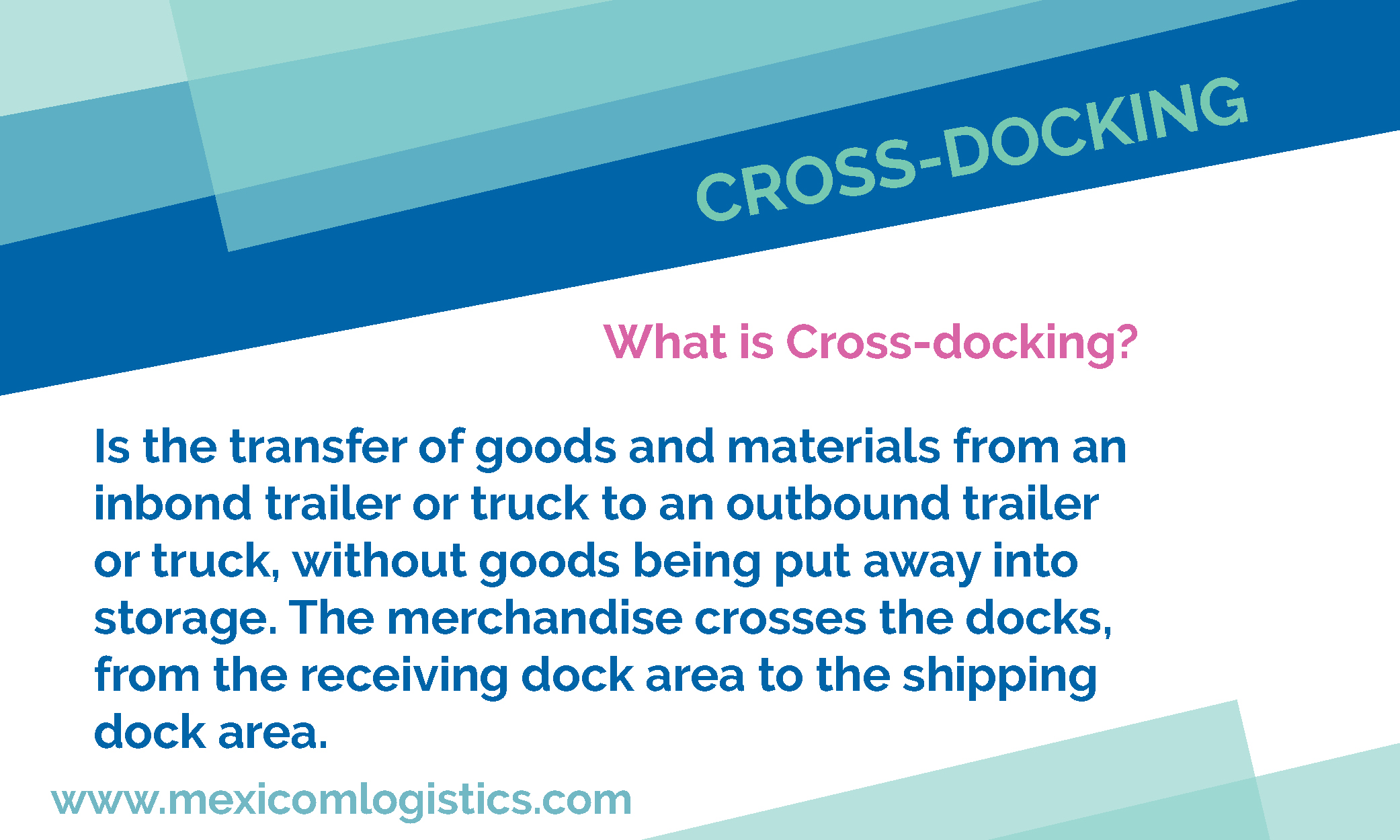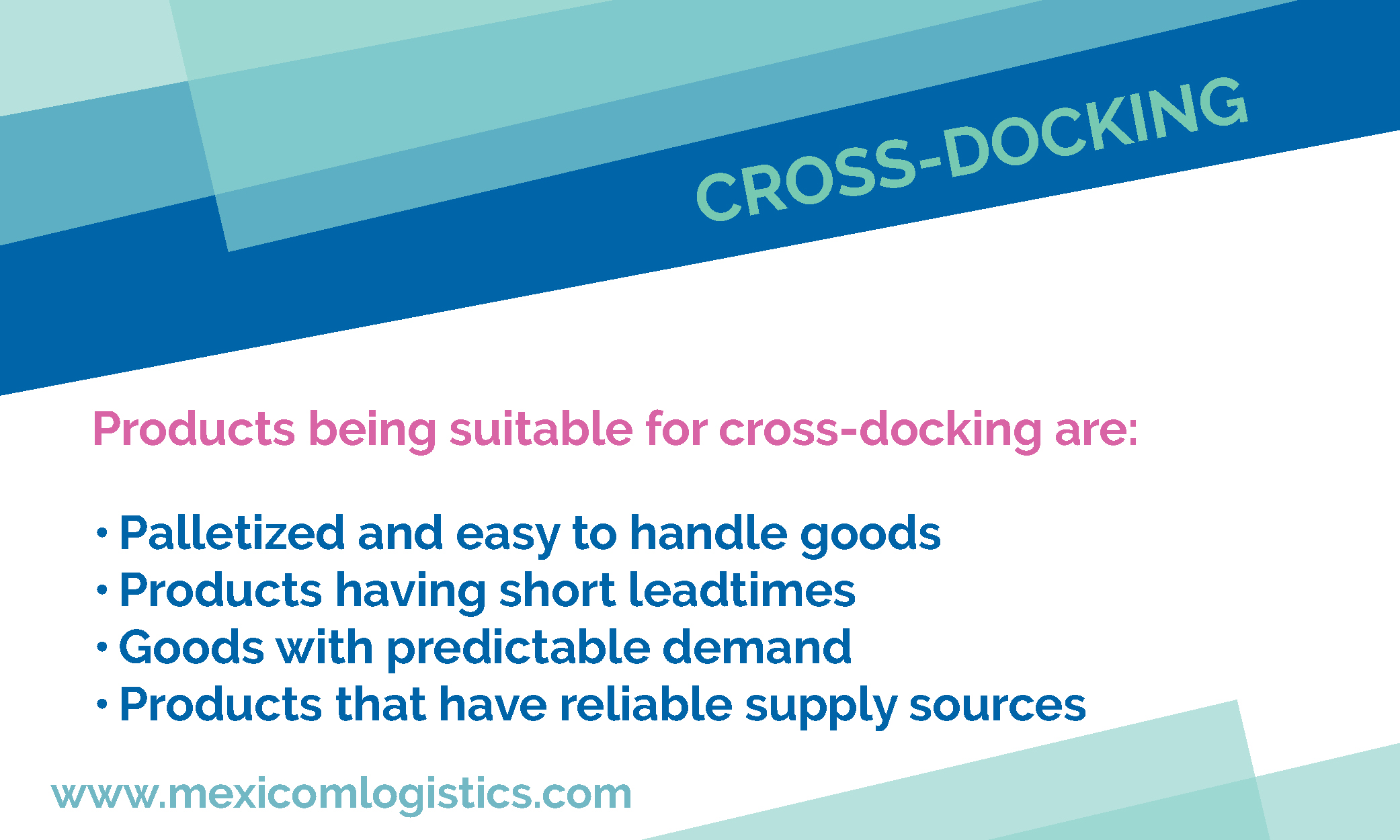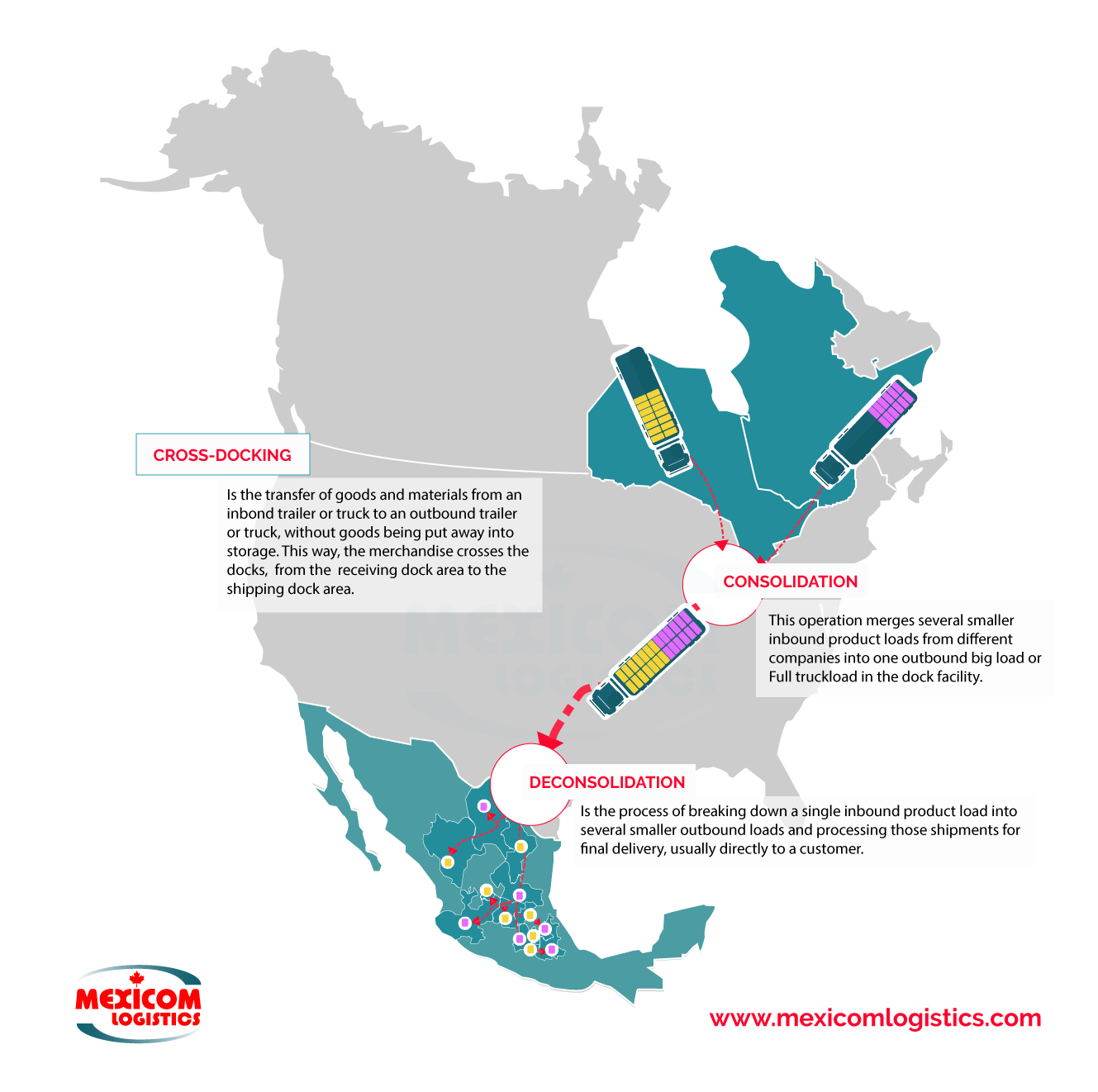All about cross-docking
Cross-docking is a distribution tactic that expedites the transportation of the products from a factory to the market. In North America, the use of cross-docking has increased significantly due to the popularity of just-in-time methods and the need to decrease the time products spend in the supply chain.
What is Cross-docking?
Is the transfer of goods and materials from an inbond trailer or truck to an outbound trailer or truck, without goods being put away into storage. This way, the merchandise crosses the docks, from the receiving dock area to the shipping dock area.
Cross-docking is a proven supply chain strategy used by manufacturers from different industries in North America, such as automotive, retail, chemicals, foods and beverages.

Products being suitable for cross-docking are:
- Palletized and easy to handle goods
- Products having short leadtimes
- Goods with predictable demand
- Products that have reliable supply sources

Common Types of Cross-docking
Consolidation
This operation merges several smaller inbound product loads from different companies into one outbound big load or Full truckload in the dock facility.
Deconsolidation
Deconsolidation is the process of breaking down a single inbound product load into several smaller outbound loads and processing those shipments for final delivery, usually directly to a customer.
Example of consolidation, deconsolidation, and cross-docking:

Different manufacturers from Quebec and Ontario need to ship small product loads to their customers located in different locations in Mexico. Shipping small loads in a Full Truckload Service would cost more than shipping them through an LTL service. So, they hire a freight forwarder, who will provide the LTL transportation service and will be in charge of the cross-docking.
The freight forwarder uses two different trucks to pick-up the shipments in Ontario and in Quebec. Then, the product is transported to a strategically located distribution center in Hebron, Kentucky. In the distribution center, the loads are consolidated to a single shipment that goes to Laredo. To expedite the operation, goods are not stored in the warehouse, they are cross-docked to a single truck that will transport them to Laredo.
Once goods arrive at a Distribution Center in Laredo, goods are deconsolidated and cross-docked to different trucks so they can be shipped to the final destinations in Mexico.
Making an effective and successful cross-docking process
A successful cross-docking process:
- Considers the time needed product consolidation at the warehouse.
- Respects delivery time windows specified by the customer.
- Plans effectively vehicle scheduling and routing.
And, very important: a successful cross-docking process depends on continuous communication between suppliers, distribution centers, customers, etc.

Mexicom Logistics is capable to follow-up and manage all involved parties successfully. If shipping between Canada and Mexico, having a trilingual logistics team on your side helps a lot to make communication effective.
If done and monitored properly, cross-docking has several benefits
Cross-docking is a powerful tool for supply chain synchronization. When done by an experienced logistics team, cross-docking minimizes the:
- earliness
- tardiness
- inventory holding
- and transportation costs
- storage space
- the risk of product damage

Mexicom Logistics offers cross-docking and other services at its warehouses,
strategically located in North America









